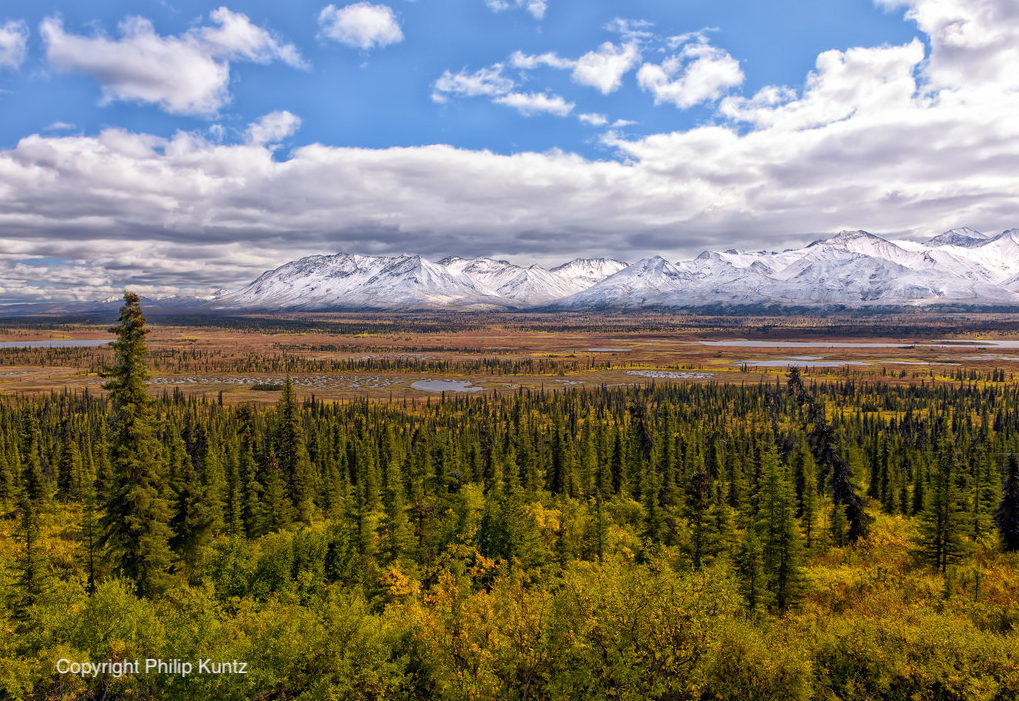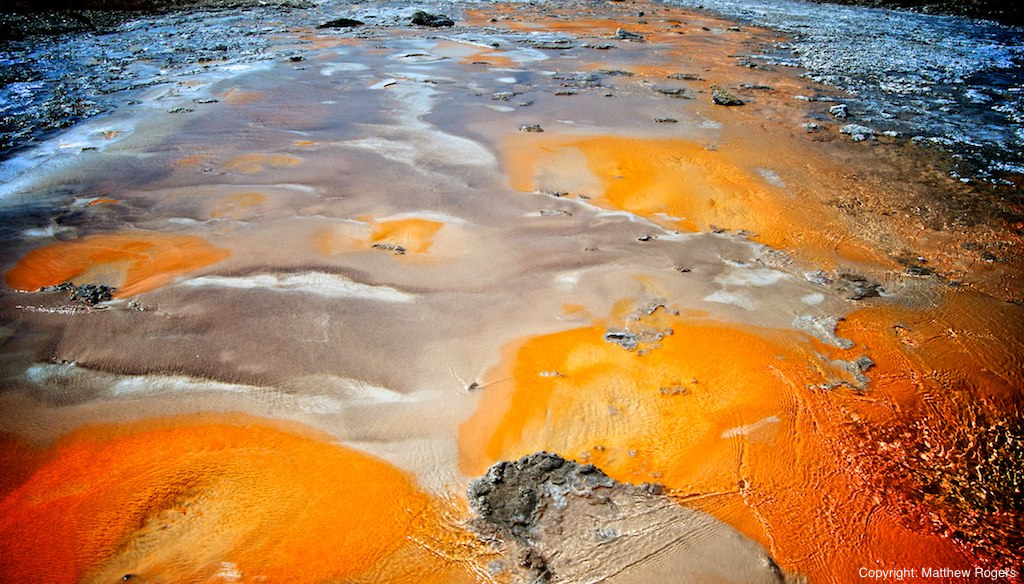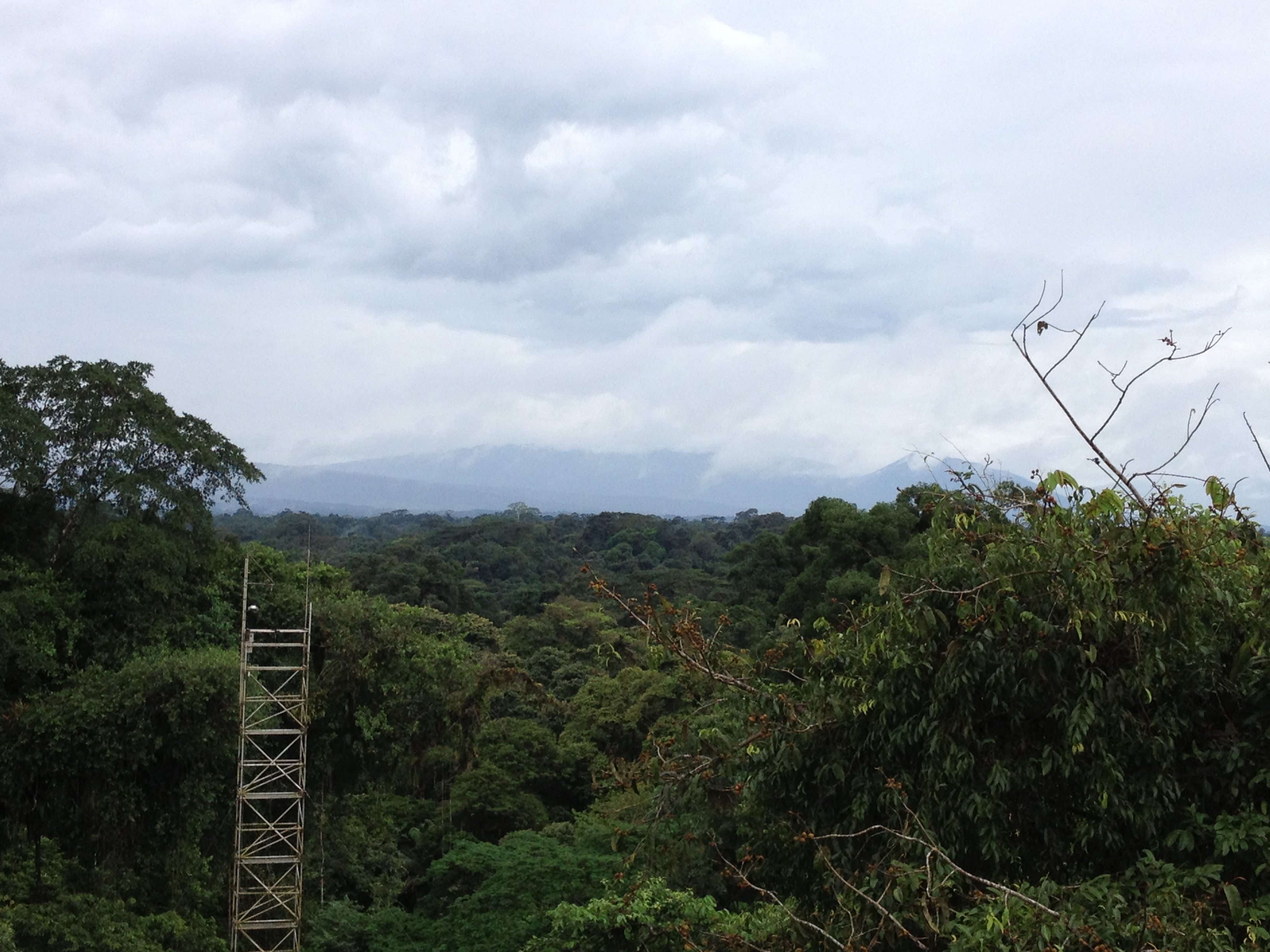Lee MacDonald
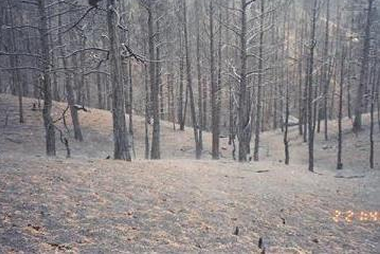
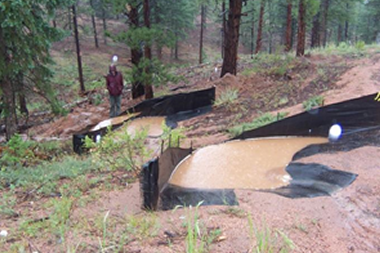
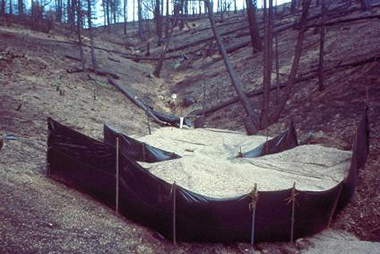
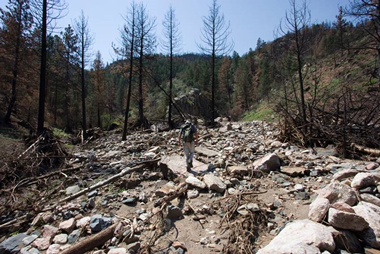
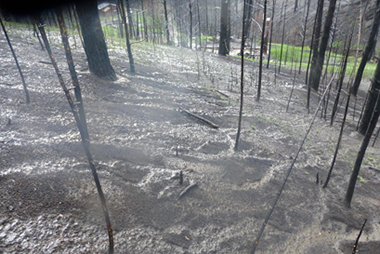
Lee MacDonald - Curriculum Vitae
Lee H. MacDonald
Professor Emeritus, Department of Ecosystem Science and Sustainability
Senior Research Scientist, Natural Resources Ecology Laboratory
Colorado State University, Fort Collins, CO 80523-1476
Phone: 970-215-5311 (cell); office: 970-491-6109
Email: lee.macdonald@colostate.edu
Education
1983-89 Ph.D. in Wildland Resource Science, Department of Forestry and Resource Management, University of California, Berkeley.
1976-77 German Academic Exchange Service (DAAD) fellowship, Faculty of Forestry, Universitat Freiburg, West Germany.
1975-76 M.S. in Resource Ecology, School of Natural Resources, University of Michigan, Ann Arbor (degree received in 1981).
1970-74 B.A. in Human Biology, Stanford University, Stanford, California.
Work Experience
2012- Professor emeritus, Watershed Science Program, Dept. of Ecosystem Science and Sustainability, and Senior Research Scientist, Natural Resources Ecology Laboratory, Colorado State University, Fort Collins, CO. Responsible for initiating and conducting a variety of research and curriculum development projects, advising graduate students, teaching courses, and other tasks as needed.
1990-2012 Associate Professor and Professor, Watershed Science Program, Colorado State University, Fort Collins, CO. Research and teaching position in land use hydrology. Responsible for undergraduate courses in land use hydrology, watershed measurements, wetland science, and watershed problem analysis. Graduate courses include cumulative watershed effects and hillslope hydrology. Research interests include cumulative effects, wetland hydrology, monitoring, and land use effects on runoff and soil erosion.
1989-90 Research Coordinator, Center for Streamside Studies, University of Washington, Seattle, WA. Responsible for developing water quality monitoring guidelines for forested areas in the Pacific Northwest and Alaska. Products from this EPA-sponsored project include a 166-page monograph, an expert system, and a series of workshops throughout the western U.S.
1988-89 Associate, Philip Williams & Associates, San Francisco. Consultant in hydrology and land use. Responsible for projects on wetland delineation and restoration, soil moisture modeling, sediment transport, surface water-groundwater interactions, shallow groundwater monitoring, and flood-frequency determinations.
1984-88 Hydrologist, U.S. Forest Service PSW Research Station, Berkeley, CA. Designed and executed research project analysing the effects of forest harvest and cloud-seeding on late season snowmelt and runoff. Wrote hydrology portions of environmental assessments on the Sequoia National Forest.
1983-84 Research Assistant, Dept. of Forestry and Resource Management, University of California, Berkeley. Estimated amount and timing of potential water yield increases from National Forest lands in California.
1982-83 Consultant, United Nations University. Assisted in the formulation and execution of interdisciplinary research projects in western China and Nepal. Prepared report assessing activities resulting from 1977 U.N. Conference on Desertification.
1977-82 Programme Officer, Natural Resources Programme, United Nations University, Tokyo, Japan. Helped plan, establish, and evaluate research and training projects, primarily in developing countries. Organized numerous technical meetings and conferences, and supervised twelve technical publications. Obtained funding to supplement core budget of approximately $2 million.
1976-77 Helped write and edit U.N. Food and Agriculture Organization document “State of Natural Resources and Human Environment for Food and Agriculture”.
1976 Research assistant, University of Michigan. Conducted ecological survey of a county park.
1974-75 Research assistant, Dow Chemical Company, Walnut Creek, CA.
1973 Congressional intern, U.S. House of Representatives, Washington, D.C.
1972-73 Research assistant, Stanford Research Institute, Palo Alto, CA
AWARDS AND FELLOWSHIPS
Special Honorary Visiting Professor, Tokyo University of Agriculture and Technology, 2019.
Certificate of Appreciation, Vietnam National University of Forestry, Hanoi, 2019.
Affiliate faculty, Humboldt State University, 2017-present.
Affiliate faculty, Department of Geosciences, 2010-present.
Visiting researcher at the University of Valencia, Government of Spain, 2004-5.
Nominated for Best Teacher Award, Colorado State University, 1997.
Berg Fellowship, Soil and Water Conservation Society, 1994.
National Science Foundation/USGS Faculty Enhancement Workshop, 1991.
National Science Foundation travel awards, 1988 and 1989.
Colman Fellowship in Watershed Management, University of California, Berkeley, 1984-85 and 1985-86.
NATO Advanced Studies Institute “Recent Advances in Hydrologic Modeling”, 10-23 July, Sintra, Portugal.
Professional Associate, East-West Center, 1978 and 1981.
German Academic Exchange Service Fellowship (DAAD), 1976-77.
California State Scholarships, 1970-74.
Undergraduate scholarships from Stanford University, Orowheat Baking Co., and Dow Chemical Co.
National Merit Finalist.
Numerous athletic awards (swimming, water polo).
PUBLICATIONS
Books and Monographs
National Research Council, 2008*. Hydrologic effects of a changing forest landscape. National Academies, Press, Washington, D.C. 142 pp.
Romme, W.H., J. Clement, J. Hicke, K. Kulakowski, L.H. MacDonald, T.L. Schoennagel, and T.T. Veblen, 2006. Recent forest insect outbreaks and fire risk in Colorado forests: a brief synthesis of relevant research. Colorado Forest Restoration Institute, Colorado State University, Fort Collins, CO. 24 pp.
MacDonald, L.H., and J.D. Stednick, 2003*. Forests and water: a state-of-the-art review for Colorado. Colorado Water Resources Research Institute, Colorado State University, Fort Collins, CO. 65 pp.
Bunte, K., and L.H. MacDonald, 1999*. Scale considerations and the detectability of sedimentary cumulative watershed effects. Technical Bulletin No. 776, National Council for Air and Stream Improvement, Research Triangle Park, NC. 327 pp.
MacDonald, L.H., E.E. Wohl, and S.W. Madsen, 1997. Validation of water yield thresholds on the Kootenai National Forest. Kootenai National Forest, Libby, Montana. 197 pp. plus app.
Binkley, D., and L.H. MacDonald, 1994*. Forests as non-point sources of pollution, and effectiveness of Best Management Practices. NCASI Technical Bulletin No. 672, National Council for Air and Stream Improvement, New York, N.Y. 57 pp.
MacDonald, L.H. (with A. Smart and R.C. Wissmar), 1991*. Monitoring guidelines to evaluate effects of forestry activities on streams in the Pacific Northwest and Alaska. EPA/910/9-91-001, U.S. Environmental Protection Agency Region 10, Seattle, WA. 166 pp. Reprinted in 1992 (total of 12,000 copies).
MacDonald, L.H., 1989. Snowmelt and runoff in the Central Sierra Nevada: effects of forest harvest and cloud-seeding. Ph.D. dissertation, University of California, Berkeley, 261 pages plus appendices.
MacDonald, L.H., 1986*. Natural resources development in the Sahel: the role of the U.N. system. Natural Resources Technical Series, United Nations University, Tokyo, 95 pp.
MacDonald, L.H. (ed.), 1982*. Agro-forestry in the African humid tropics. Natural Resources Technical Series, United Nations University, Tokyo, 163 pp. (also translated into French). Reprinted in 1984.
Journal Articles, Proceedings, and Book Chapters (* indicates peer-reviewed)
Ramos-Scharrón, C.E., E.E. Alicea-Diaz, Y.Figueroa-Sanchez, M.C. LeFevor, P. Mclaughlin, L.H. MacDonald, K. Reale-Munroe, E.L. Thomaz, R. Viqueira-Rios, in press. Three decades of road and trail runoff and erosion in the northeastern Caribbean – a research perspective. In Proceedings, Soil Erosion Research Under a Changing Climate, American Society of Agricultural and Biological Engineers, 8 pp.
Stubblefield, A.P., C. Faubion, L. MacDonald, S. Beach, N. Harrison, A. Niepoth, M. Sparacino, 2021. Evaluation of Best Management Practices in Railroad Gulch, Elk River Watershed: Final Report. Cal-Fire, Sacramento, California. 152 pp. plus appendices.
Wilson, C.R., S.K. Kampf, S. Ryan, T. Covino, L.H. MacDonald, and H. Gleason, 2021*. Connectivity of post-fire runoff and sediment from nested hillslopes and watersheds. Hydrological Processes 35(1), p.e13975. http://doi.org/10.1002/hyp.13975.
Fisher, A., P. Belmont, B.P. Murphy, L. MacDonald, K.L. Ferrier, and K. Hu, 2021*. Natural and anthropogenic controls on sediment rating curves in Northern California coastal watersheds. Earth Surface Processes and Landforms.
Kampf, S.K., B. Gannon, C. Wilson, F. Saavedra, M.E. Miller, A. Heldmeyer, B. Livneh, P. Nelson, and L. MacDonald, 2020*. PEMIP: Post-fire erosion model inter-comparison project. Journal of Environmental Management 268 p. 110704.
Wilson, C.R., S.K. Kampf, J.W. Wagenbrenner, L.H. MacDonald, and H. Gleason, 2020*. Hillslope sediment fence catch efficiencies and particle sorting for post-fire rain storms. Earth Surface Processes and Landforms 46(1): 267-275.
Ferrier, K., L.H. MacDonald, P. Belmont, and K. Hu, 2020. 10Be concentrations in stream sediment and inferred denudation rates in the Little River and Elk River basins, northern Colorado Coast Ranges. HydroShare, https://doi.org/10.4211/hs.b7515f219c7a40439c9c2b44183192c4.
Brogan, D.J., P.A. Nelson, and L.H. MacDonald, 2019*. Spatial and temporal patterns of sediment storage and erosion following a wildfire and extreme flood. Earth Surface Dynamics 7: 563-590. doi.org/10.5194/esurf-7-563-2019.
MacDonald, L.H, D.J. Brogan, P.A. Nelson, S.K. Kampf, and J.W. Wagenbrenner, 2019*. Scaling post-fire effects from hillslopes to watersheds: processes, problems, and implications. In Proceedings, Federal Interagency Sedimentation and Hydrologic Modeling Conference, 6 pages.
MacDonald, L.H, G. Sosa-Pérez, and C. Carlos-Scharrón, 2019*. Sediment production and delivery from unpaved roads: a little-recognized but significant sediment source. In Proceedings, Federal Interagency Sedimentation and Hydrologic Modeling Conference, 6 pages.
MacDonald, L.H, D.J. Brogan, P.A. Nelson, and S.K. Kampf, 2019*. Fires and floods: a case study of the relative magnitude and persistence of geomorphic effects at the watershed scale. In Proceedings, Federal Interagency Sedimentation and Hydrologic Modeling Conference, 7 pages.
Brogan, D.J., L.H. MacDonald, P.A. Nelson, and J.A. Morgan, 2019*. Channel geomorphic complexity and sensitivity to fires and floods in mountain catchments. Geomorphology 337: 53-68.
Gannon, B., Y. Wei, L.H. MacDonald, S.K. Kampf, K.W. Jones, J.B. Cannon, B.H. Wolk, A.S. Cheng, R.N. Addington, and M.P. Thompson, 2019*. Prioritizing fuels reductions for water supply protection. International Journal of Wildland Fire. https://doi.org/10.071/WF18182. 19 pages. Correction in IJWF 29: 1054-1055 https://doi.org/10.1071/WF18182_CO.
Wilson, C., S. Kampf, J. Wagenbrenner, and L. MacDonald, 2018*. Rainfall thresholds for post-fire runoff and sediment delivery from plot to watershed scales. Forest Ecology and Management 430: 346-356.
Schmeer, S., S.K. Kampf, L.H. MacDonald, J. Hewitt, and C. Wilson, 2018*. Empirical models of annual post-fire erosion on mulched and unmulched hillslopes. Catena 163:276-287.
MacDonald, L.H., 2018. Post-fire debris flow problems aren’t new and likely to get worse. Conversations, 16 January 2018, 5 pp.
MacDonald, L.H., and G. Sosa-Pérez, 2018. Decommissioning unpaved forest roads: alternatives and effectiveness. Stream Notes, February 2018, pp.7-12.
Brogan, D.C., P.W. Nelson, and L.H. MacDonald, 2017*. Reconstructing extreme post-wildfire floods: a comparison of convective and mesoscale events. Earth Surface Processes and Landforms 42:2502-2522; https://doi: 10.1002/esp.4194.
Sosa-Pérez, G., and L.H. MacDonald, 2017*. Effects of closed roads, traffic, and two road decommissioning treatments on infiltration and sediment production: a comparative study using rainfall simulations. Catena 159:93-105.
MacDonald, L.H., M.W. Miles, S. Beach, N.M. Harrison, M.R. House, P. Belmont, and K.L. Ferrier, 2017*. Development and implications of a sediment budget for the Upper Elk River Watershed, Humboldt County, California. In Coast Redwood Science Symposium—2016: Past successes and future direction, U.S.D.A. Forest Service PSW-GTR-258, Pacific Southwest Station, Albany, CA, pp. 163-173.
Sosa-Pérez, G., and L.H. MacDonald, 2017. Reductions in road sediment production and road-stream connectivity from two decommissioning treatments. Forest Ecology and Management 398:116-129.
Sosa-Pérez, G., and L.H. MacDonald, 2017*. Effects of a wildfire on road surface erosion and road-stream connectivity. Earth Surface Processes and Landforms 42: 735-748. DOI: 10.1002/esp.4018.
Jones, K.W., J.B. Cannon, F.A. Saavedra, S.K. Kampf, R.N. Addington, A.S. Cheng, L.H. MacDonald, C. Wilson, and B. Wolk, 2017* (latter authors in alphabetical order). Return on investment from fuel treatments to reduce severe wildfire and erosion in a watershed investment program in Colorado. Journal of Environmental Management 198:66-77.
MacDonald, L.H., and G. Sosa-Pérez, 2017. Fire effects on road sediment production and delivery. Stream Notes, February 2017, pp.7-10.
Cotrufo, M.F., C.M. Boot, S. Kampf, P.A. Nelson, D.J. Brogan, T. Covino, M.L. Haddix, L.H MacDonald, S. Rathburn, S. Ryan-Burkett, S. Schmeer, and E. Hall, accepted pending revisions*. Redistribution of pyrogenic carbon from hillslopes to stream corridors following a large sub-alpine wildfire. Global Biogeochemical Cycles 10.1002/2016GB005467, 8 pp.
Sosa-Perez, G., and L.H. MacDonald, in press. Effects of a wildfire on road surface erosion and road-stream connectivity. Earth Surface Processes and Landforms DOI: 10.1002/esp.4018. 14 pp.
Kampf, S.K., D.J. Brogan, S. Schmeer, L.H. MacDonald, and P.A. Nelson, 2016*. How do geomorphic effects of rainfall vary with storm type and spatial scale in a post-fire landscape? Geomorphology 273: 39-51.
Wagenbrenner, J.W., L.H. MacDonald, R.N. Coats, P.R. Robichaud, and R.E. Brown, 2015*. Effects of post-fire salvage logging on ground cover, soils and sediment production in the interior western USA. Forest Ecology and Management 335:179-193.
MacDonald, L.H., 2014. Linking universities, forestry research, and its applications. In Proceedings, Workshop on Linkage of Research, Training, and Production Development for Restructuring the Forestry Sector in Vietnam, 14-15 November, Hanoi, Vietnam, pp. 243-253.
Anh, P.T.Q., T. Gomi, L.H. MacDonald, S. Miugaki, P.V. Khoa, and T. Furuichi, 2014*. Linkages among land use, macronutrient levels, and soil erosion in northern Vietnam: A plot-scale study. Geoderma http://dx.doi.org/10.1016/j.geoderma.2014.05.011, 11 pp.
Rocca, M.E., P.M. Brown, L.H. MacDonald, and C.M. Carrico, 2014*. Climate change impacts on fire regimes and key ecosystem services in Rocky Mountain forests. Forest Ecology and Management http://dx.doi.org/10.1016/j.foreco.2014.04.005, 16 pp.
MacDonald, L.H., and D. Coe, 2014. A suggested tiered monitoring strategy for maximizing best management practice effectiveness and protecting water quality. Invited response, J. of Forestry 112(1): 49-50,
Tuan, V.D., T. Hilger, L. MacDonald, G. Clemens, E. Shiraishi, D.V. Tran, G. Stahr, and G. Cadisch, 2014*. Mitigation potential of soil conservation in maize cropping on steep slopes. Field Crops Research 156: 91-102.
Prats S.A., M.A.S. Martins, M.C. Malvar, D.C.S. Vieira, C.O.A. Coelho, A. Cerdà, L.H. MacDonald, A.D.J. Ferreira, and J.J. Keizer, 2013. Aplicação de “mulch” após o fogo: um método efectivo para a redução da escorrência e da erosão. In A. Bento Gonçalves and A. Vieira (eds.), Proceedings of the VII Encontro de Geografia Física e Ambiente. Grandes incêndios florestais, erosão, degradação e medidas de recuperação dos solos. Parte 2, pp. 255-266. ISBN: 978-989-97214-2-5 (solicited contribution).
Tuan, V.D., T. Hilger, S. Erisa, G. Clemens, L. MacDonald, and G. Cadisch, 2012. Erosion on steep and fragmented lands: mitigation potential of soil conservation for maize cropping in north-western Vietnam. Proceedings, 3rd International Conference on Conservation Agriculture and Sustainable Upland Livelihood, 10-15 December 2012, Hanoi, pp. 243-245.
MacDonald, L.H., 2012. Dr. Lee H. MacDonald, 2008 U.S. Faculty Scholar. Excellence in educational exchange: stories of VEF Fellows and Scholars, Vietnam Education Foundation. 3 pp.
MacDonald, L.H., 2012. Lessons learned after 30 years in watershed science. Colorado Water 29(2): 29-32.
Prats, S.A., L.H. MacDonald, M. Monteiro, A.J.D. Ferreira, C.O.A. Coelho, and J.J. Keizer, 2012*. Effectiveness of forest residue mulching in reducing post-fire runoff and erosion in a pine and eucalypt plantation in north-central Portugal. Geoderma 191: 115-124.
Miller, M.E., L.H. MacDonald, P.R. Robichaud, and W.E. Elliot, 2011*. Predicting post-fire erosion in the western U.S. International Journal of Wildland Fire 20: 982-999.
Robichaud, P.R., L.H. MacDonald, and R.B. Foltz, 2010*. Chapter 5: Fuel management and erosion. In Cumulative Effects of Fuels Management in the Western United States, USDA Forest Service General Technical Report RMRS-231, Fort Collins, CO, pp. 79-100.
Troendle, C.A., L.H. MacDonald, C.H. Luce, and I.J. Larsen, 2010*. Chapter 7: Fuel management and water yield. In Cumulative Effects of Fuels Management in the Western United States, USDA Forest Service General Technical Report RMRS-231, Fort Collins, CO, pp. 126-148.
Elliot, W.E., K. Hyde, L.H. MacDonald, and J. McKean, 2010*. Chapter 13: Tools for analysis. In Cumulative Effects of Fuels Management in the Western United States, USDA Forest Service General Technical Report RMRS-231, Fort Collins, CO, pp. 246-276.
Litschert, S.E., and L.H. MacDonald, 2009*. Frequency and characteristics of sediment delivery pathways from forest harvest units to streams. Forest Ecology and Management 259: 143-150.
Larsen, I.J., L.H. MacDonald, E. Brown, D. Rough, M.J. Welsh, J.H. Pietraszek, Z. Libohova, J. de Dios Benavides-Solorio, and K. Schaffrath, 2009*. Causes of post-fire runoff and erosion: water repellency, surface cover, or soil sealing. Soil Science Society of America Journal 73(4): 1393-1407.
Doerr, S.H., R.A. Shakesby, and L.H. MacDonald, 2009*. Soil water repellency: a key factor in post-fire erosion. In Fire Effects on Soils and Restoration Strategies, edited by A. Cerdà and P.R.Robichaud, Science Publishers, Enfield, NH, pp. 197-223.
MacDonald, L.H., and I.J. Larsen, 2009*. Effects of forest fires and post-fire rehabilitation: a Colorado case study. In Fire Effects on Soils and Restoration Strategies, edited by A. Cerdà and P.R.Robichaud, Science Publishers, Enfield, NH, pp. 423-452.
MacDonald, L.H., and I.J. Larsen, 2009*. Runoff and erosion from wildfires and roads: effects and mitigation. In Land Restoration to Combat Desertification: Innovative Approaches, Quality Control and Project Evaluation, S. Bautista, J. Aronson, and V.R. Vallejo (eds.), Fundación Centro de Estudios Ambientes Mediterráneo, Valencia, Spain, pp. 145-167.
Jones, J.A., G.L. Achterman, L.A. Augustine, I.F. Creed, P.F. Ffolliott, L. MacDonald, and B.C. Wemple, 2009*. Hydrologic effects of a changing forest landscape—challenge for the hydrological sciences. Invited commentary, Hydrological Processes 23: 2699-2704.
Benavides Solorio, J. de D., L. MacDonald, and J. G. Flores Garnica, 2009*. Escurrimiento y erosion despues de dos incendios forestales y una quema prescrita utilizando simulador de lluvia. In Impacto Ambiental de Incendios Forestales, Mundi-Prensa, Cuauhtemoc, Mexico, pp. 243-264.
MacDonald, L.H., and P. R. Robichaud, 2008. Postfire erosion and the effectiveness of emergency rehabilitation treatments over time. Stream Notes, USDA Forest Service, Rocky Mountain Research Station. 6 pp.
MacDonald, L.H., and I.J. Larsen, 2008. Sediment production and delivery from wildfires: processes and mitigation. In Proceedings of the First World Landslide Forum, United Nations University, Tokyo, Japan. International Consortium on Landslides, Japan, pp. 381-384.
MacDonald, L.H., and D.B.R. Coe, 2008. Road sediment production and delivery: processes and management. In Proceedings of the First World Landslide Forum, United Nations University, Tokyo, Japan. International Consortium on Landslides, Japan, pp. 385-388.
MacDonald, L.H., and D.B. Coe, 2007*. Influence of headwater streams on downstream reaches in forested areas. Forest Science 53(2): 148-168 (invited review paper).
Larsen, I.J., and L.H. MacDonald, 2007*. Predicting postfire sediment yields at the hillslope scale: testing RUSLE and Disturbed WEPP. Water Resources Research 43, W11412, doi:10.1029/2006WR00560, 18 pp.
Ramos-Scharron, C., and L.H. MacDonald, 2007*. Development and application of a GIS-based sediment budget model. Environmental Management 84: 157-172.
Ramos-Scharron, C., and L.H. MacDonald, 2007*. Measurement and prediction of natural and anthropogenic sediment sources on St. John, U.S. Virgin Islands. Catena 71: 250-266.
Erskine, R.E., T. Green, J. Ramirez, and L.H. MacDonald, 2007*. Digital elevation accuracy and grid cell size: effects on estimated terrain attributes. Soil Science Society of America Journal 71: 1371-1380.
Ramos-Scharron, C., and L.H. MacDonald, 2007*. Runoff and suspended sediment yields from an unpaved road segment. Hydrological Processes 21: 35-50.
Woods, S.W., L.H. MacDonald, and C.J. Westbrook, 2006*. Hydrologic interactions between an alluvial fan and a slope wetland in the Central Rocky Mountains. Wetlands 25(1): 230-243.
Wagenbrenner, J.W., L.H. MacDonald, and D. Rough, 2006*. Effectiveness of three post-fire rehabilitation treatments in the Colorado Front Range. Hydrological Processes 20: 2989-3006.
Conovitz, P. and L.H. MacDonald, 2006*. Spatial and temporal active layer dynamics along three glacial meltwater streams in the McMurdo Dry Valleys. Arctic, Antarctic, and Alpine Research 38(1):42-53.
Erskine, R.H., T.R. Green, J.A. Ramirez, and L.H. MacDonald, 2006*. Comparison of grid-based algorithms for computing upslope contributing area. Water Resources Research 42: W09146, doi:10.1029/2005WR004648.
Benavides-Solorio, J. and L. H. MacDonald, 2005*. Measurement and prediction of post-fire erosion at the hillslope scale, Colorado Front Range. International Journal of Wildland Fire 14:1-18.
Ramos-Sharron, C. and L.H. MacDonald, 2005*. Measurement and prediction of sediment production from unpaved roads, St. John, U.S. Virgin Islands. Earth Surface Processes and Landforms 30:1283-1304.
Mzuku, M., R. Khosla, R. Reich, D. Inman, F. Smith, and L. MacDonald, 2005*. Spatial variability of measured soil properties across site-specific management zones. Soil Science Society of America Journal 69: 1572-1579.
MacDonald, L. H., D.B. Coe, and S.E. Litschert, 2004*. Assessing cumulative watershed effects in the Central Sierra Nevada: hillslope measurements and catchment-scale modeling. In Murphy, D.D. and P.A. Stine (editors), Proceedings of the Sierra Nevada Science Symposium, U.S.D.A. Forest Service Gen. Tech. Rep. PSW-GTR-193, Albany, CA, pp. 149-157.
MacDonald, L.H., and E.L. Huffman, 2004*. Post-fire soil water repellency: persistence and soil moisture thresholds. Soil Science Society of America Journal 68:1729-1734.
Robichaud, P.R., L. H. MacDonald, J. Freeouf, D. Neary, and D. Martin, 2003*. Post-fire rehabilitation. In R.T. Graham (ed.), Hayman Fire Case Study, USDA Forest Service Gen. Tech. Rep. RMRS-GTR-114, Fort Collins, CO, pp. 241-262. www.fs.fed.us/rm/hayman_fire.
Kershner, J.L., L. MacDonald, L.M. Decker, and K. Winters, 2003*. Fire-induced changes in the Hayman landscape. In R.T. Graham (ed.), Hayman Fire Case Study, USDA Forest Service Gen. Tech. Rep. RMRS-GTR-114, Fort Collins, CO, pp. 232-243. www.fs.fed.us/rm/hayman_fire.
Cipra, J.E., E.F. Kelly, and L.H. MacDonald, 2003*. Historical (pre-1860) and current (1860-2002) erosion/sedimentation events, key soil properties of the Hayman landscape and their relation to aquatic and terrestrial systems and to rehabilitation activities. In R.T. Graham (ed.), Hayman Fire Case Study, USDA Forest Service Gen. Tech. Rep. RMRS-GTR-114, Fort Collins, CO, pp. 172-178. www.fs.fed.us/rm/hayman_fire.
Benavides-Solorio, J. de D., and L.H. MacDonald, 2003. Erosion rates and models after forest fires at the hillslope scale, Central Rocky Mountains, USA. In Memoria del Simposio Binacional de Modelaje y Sensores Remotos en Agricultura Mexico-USA, INIFAP, Mexico, pp. 57-63.
MacDonald, L.H., 2003. Effects of forest harvest on water yields. In P.S. Johnson et al. (eds.), Water resources of the Lower Pecos Region, New Mexico, New Mexico Bureau of Geology and Mineral Resources, Socorro, NM, pp. 83-87.
MacDonald, L.H., and S. Fernald, 2003. Managing forests and woodlands for increasing water yields. In P.S. Johnson et al. (eds.), Water resources of the Lower Pecos Region, New Mexico, New Mexico Bureau of Geology and Mineral Resources, Socorro, NM, pp. 93-97.
MacDonald, L.H., 2002. Effects of changes in Colorado’s forests on water yields and water quality. Colorado Water 19(5), 3 pp.
MacDonald, L.H., and J.D. Stednick, 2002. CSU faculty and students study the aftereffects of wildfires on Colorado’s Front Range. Colorado Water 19: 7-9.
Montgomery, D.R., and L.H. MacDonald, 2002*. Diagnostic approach to stream channel assessment and monitoring. J. of the American Water Resources Association 38(1):1-16.
Benavides-Solorio, J., and L.H. MacDonald, 2001*. Post-fire runoff and erosion from simulated rainfall on small plots, Colorado Front Range. Hydrological Processes 15: 2931-2952.
Huffman, E.L., L.H. MacDonald, and J.D. Stednick, 2001*. Strength and persistence of fire-induced soil hydrophobicity under ponderosa and lodgepole pine, Colorado Front Range. Hydrological Processes 15:2877-2892.
Loftis, J.C., L.H. MacDonald, S. Streett, H.K. Iyer, and K. Bunte, 2001*. Detecting cumulative effects: the power of pairing. J. of Hydrology 251: 49-64.
MacDonald, L.H., R.W. Sampson, and D.M. Anderson, 2001*. Runoff and road erosion at the plot and road segment scale, St. John, U.S. Virgin Islands. Invited paper for a special issue on roads, Earth Surface Processes and Landforms 26:1-22 (February 2001).
MacDonald, L.H., R.W. Sampson, D. Brady, L. Juarros, and D. Martin, 2000*. Predicting post-fire erosion and sedimentation risk on a landscape scale: a case study from Western Colorado. J. of Sustainable Forestry 11: 57-87. Also published as a chapter in R.N. Sampson, R.D. Atkinson, and J.W. Lewis (eds.), Mapping Wildfire Hazards and Risks, The Haworth Press, Binghamton, N.Y.
MacDonald, L.H., 2000*. Evaluating and managing cumulative effects: process and constraints. Environmental Management 26(3): 299-315.
Cooper, D.J., and L.H. MacDonald, 2000*. Restoring the vegetation of mined peatlands in the Southern Rocky Mountains of Colorado, U.S.A. Restoration Ecology 8: 103-111.
MacDonald, L.H., 2000. Predicting and managing cumulative watershed effects. Proceedings, Watershed Management 2000, American Society of Civil Engineers, 10 pp.
Loftis, J.C., and L.H. MacDonald, 2000. Exploring the benefits of paired watersheds for detecting cumulative effects. Proceedings, Watershed Management 2000, American Society of Civil Engineers, 9 pp.
Reid, K.D., B.P. Wilcox, D.D. Breshears, and L.H. MacDonald, 1999*. Runoff and erosion in a pinon-juniper woodland: influence of vegetation patches. Soil Science Society of America Journal 63: 1869-1879.
Cooper, D.J., L.H. MacDonald, S.K. Wenger, and S.W. Woods, 1998*. Hydrologic restoration of a fen in Rocky Mountain National Park. Wetlands 18(3): 335-345.
Schnackenberg, E.S., and L.H. MacDonald, 1998*. Detecting cumulative effects in headwater streams on the Routt National Forest, Colorado. Journal of American Water Resources Association 34(5): 1163-1177.
Anderson, D.M., and L. H. MacDonald, 1998*. Modeling road surface sediment production using a vector geographic information system. Earth Surface Processes and Landforms 23:95-107.
Conovitz, P.A., D.M. McKnight, L.H. MacDonald, A. Fountain, and H.R. House, 1998*. Hydrologic processes influencing streamflow variation in Fryxell Basin, Antarctica. In J. Priscu (ed.), Ecosystem Dynamics in a Polar Desert: The McMurdo Dry Valleys, Antarctica, American Geophysical Union, Washington, D.C., pp. 93-108.
MacDonald, L.H., D.M. Anderson, and W.E. Dietrich, 1997*. Paradise threatened: land use and erosion on St. John, U.S. Virgin Islands. Environmental Management 21(6):851-863.
Wohl, E., S. Madsen, and L. MacDonald, 1997*. Characteristics of log and clast bed steps in step-pool streams of Northwestern Montana, USA. Geomorphology 20:1-10.
MacDonald, L.H., and C.T. Carmichael, 1996*. Monitoring the effects of forestry on streams: variable selection and the development of an expert system. Environmental Monitoring and Assessment 40:55-73.
Bunte, K., and L.H. MacDonald, 1995. Detecting changes in sediment loads: where and how is it possible? In W. Osterkamp (ed.), Effects of Scale on Interpretation and Management of Sediment and Water Quality, International Association of Hydrological Sciences Publication no. 226, pp. 253-261.
Anderson, D.A., and L.H. MacDonald, 1995. An investigation of sediment sources affecting marine resources at Virgin Islands National Park. Park Science 15(2):26-28.
MacDonald, L.H., and J.A. Hoffman, 1995*. Causes of peak flows in Northwestern Montana and Northeastern Idaho. Water Resources Bulletin 31(1):79-95.
MacDonald, L.H., 1994*. Developing a monitoring project. J. of Soil and Water Conservation 49(3):221-227.
MacDonald, L.H., 1993. Sediment monitoring: reality and hope. In EPA/USFS Technical Workshop on Sediments, Terrene Institute, Washington, D.C., pp. 81-88.
MacDonald, L.H., 1993*. Developing a field component in hydrologic education. Water Resources Bulletin 29(3):357-368.
MacDonald, L.H., 1993*. Beyond the Guidelines: practical lessons in monitoring. Environmental Monitoing and Assessment 26:203-218.
MacDonald, L.H., 1992. Hydrologic education: the need for a field component. In Water Resources and Environment: Education, Training, and Research, Colorado Water Resources Research Institute Information Series No. 69, Fort Collins, Colorado, pp. 57-65.
Naiman, R.N., T.J. Beechie, L. Benda, D.R. Berg, P.A. Bisson, L.H. MacDonald, M. O’Connor, P. Olson, and E.A. Steel, 1992*. Fundamental elements of ecologically healthy watersheds in the Pacific Northwest Coastal Ecoregion. In Naiman, R.J. (ed.), Watershed Management: Balancing Sustainability and Environmental Change, Springer-Verlag, New York, pp. 127-188.
MacDonald, L.H., A. Smart, and R.C. Wissmar, 1991. Guidelines for monitoring nonpoint pollution: effects of forestry on streams in the Pacific Northwest and Alaska. In Nonpoint Source Pollution: The Unfinished Agenda for the Protection of Our Water Quality, Washington Water Research Center Report No. 78, Tacoma, Washington, pp. 411-420.
MacDonald, L.H., 1989. Rehabilitation and recovery following wildfires: a synthesis. In Proceedings of the Symposium on Fire and Watershed Management, U.S. Forest Service General Technical Report PSW-109, pp. 141-144.
MacDonald, L.H., 1989. Cloud-seeding and streamflow in the Central Sierra Nevada of California. In Cloud Physics and Weather Modification Research Programme, WMO/TD No. 269, World Meteorological Organization, Geneva, Switzerland, pp. 367-370.
MacDonald, L.H., 1989. Swimming: fitness afloat. Diabetes Forecast, July, pp. 28-31.
Coats, R., and L.H. MacDonald, 1988. Use of hydrologic criteria in wetland determination. In Urban Wetlands, Proceedings of the National Wetland Symposium, Association of Wetland Managers, Berne, N.Y., pp. 164-172.
MacDonald, L.H., 1988*. An inexpensive portable system for drilling into subsurface layers. Soil Science Society of America Journal 52:1817-1819.
MacDonald, L.H., 1987*. Forest harvest, snowmelt and streamflow in the Central Sierra Nevada. In R.H. Swanson et al. (eds.), Forest Hydrology and Watershed Management, International Association of Hydrologic Sciences Publication no. 167, pp. 273-284.
Rector, J.R., and L.H. MacDonald, 1987. Water yield opportunities on National Forest lands in the Pacific Southwest Region. In Proceedings, California Watershed Management Conference, Report No. 11, Wildland Resources Center, University of California, Berkeley, pp. 68-73.
MacDonald, L.H., 1986*. Persistence of soil moisture changes resulting from artificially-extended snowmelt. Proceedings, 54th Western Snow Conference: 146-149.
MacDonald, L.H., 1982. Agro-forestry in the African humid tropics. Commonwealth Forestry Review 61(1): 43-45.
Manshard, W., and L.H. MacDonald, 1979. Survival, development and welfare. Mazingira 12:51-59.
Manshard, W., and L.H. MacDonald, 1979. Programme on the use and management of natural resources 1977-78. Geojournal 3(1): 105-108.
MacDonald, L.H., 1978. The natural resources program at the U. N. University. Natural Resources and Energy 2(4).
Burgers, A.C.J., and L.H. MacDonald, 1977. Networks as a means for development. Microbio. News. 2(2):12-16.
MacDonald, L.H., 1977. The natural resources programme at the United Nations University. Geojournal 1(6):87-93.
- Software and Related Materials
MacDonald, L.H., and S. Litschert, 2003. FOREST: Forest Erosion Simulation Tools. A set of GIS-based programs to predict changes in erosion and sediment yields from fires, roads, and forest management activities. USDA Forest Service Region 5, Vallejo, CA.
MacDonald, L.H., and S. Litschert, 2003. Delta-Q. A program to predict changes in flow from forest management activities. USDA Forest Service Region 5, Vallejo, CA.
MacDonald, L.H., and C.T. Carmichael, 1991. PASSSFA (Parameter Selection System for Streams in Forested Areas). An expert system developed for U.S. Environmental Protection Agency, Seattle, WA. 230 Kb.
- Book reviews
MacDonald, L.H., 1995. Hydrology: an environmental approach. Book review in Applied Mechanics 48(5):B67-68.
MacDonald, L.H., 1993. Wildland Watershed Management. Book review, Forest Ecology and Management 61(1-2): 192-194.
* indicates peer-reviewed publication
RESEARCH AND TEACHING GRANTS
2021-2022: Evaluating hillslope soil erosion and forest recovery after tethered logging on steep slopes. USDA Forest Service Rocky Mountain Research Station, co-PI, $24,398.
2020-2021: Sediment production rates over time in two sub-watersheds in Little River, NW CA. National Council for Air and Stream Improvement, PI, $5000.
2018-2020: Developing a sediment budget over time for the Upper Elk River and Little River, California. National Council for Air and Stream Improvement, PI, $21,617.
2017-2018: Quantifying sediment inputs from forest management activities: A case study from northwestern California. National Council for Air and Stream Improvement, PI, $10,653.
2015-2017: Quantifying cumulative watershed effects over time in the Little River watershed, Humboldt County, Northwestern California. California Department of Forestry and Fire Protection, PI, $71,180.
2014-2017: Sediment delivery to streams from fires and roads: Phase 1 and Phase 2. USDA Forest Service, PI, $49,060.
2014-2017: Wildfire impacts on peak flows and sediment delivery: implications for irrigation infrastructure and management. USDA Agricultural Experiment Station, ~$90,000, co-PI.
2013-2016: Collaborative research: spatial dynamics of burn severity and post-fire recovery in the High Park Fire area. National Science Foundation, $817,355, Co-PI.
2013- 2018: Road sediment production and delivery: effectiveness of road decommissioning. Arapaho-Roosevelt National Forest, $17,964, sole PI.
2012-2014: Evaluation of forest management effects in the Judd Creek watershed. Sierra Pacific Industries, $72,357, sole PI.
2012-2013: RAPID response to the High Park Fire, Larimer County, Colorado. National Science Foundation, $199,978, Senior Collaborator.
2011-17: Developing an advanced curriculum in Natural Resources Management at Vietnam Forestry University. Vietnam Forestry University and Vietnam Ministry of Education and Training. $533,986, sole PI.
2009-11: Forests, water, land use, and climate change in the Mekong River Delta. Warner College of Natural Resources, $8,565, sole PI.
2008-09: Development and teaching a lecture and a field-based course in hydrology, Vietnam Forestry University. U.S. Faculty Scholar grant, Vietnam Education Foundation, $58,000, sole PI.
2008-09: Enhance the cooperation between WCNR and Vietnam Forestry University. Warner College of Natural Resources, $6,830 plus $6,830 from CSU International Programs, co-PI.
2007-2010: Sediment production and delivery: roads, hillslopes, and cumulative watershed effects. Sierra National Forest, $124,973, sole PI.
2007-2010: Evaluating and predicting post-fire salvage logging effects on erosion. Joint Fire Science Program, $286,504, co-PI.
2007-09: Road erosion, rehabilitation, and sediment and delivery. Lassen National Forest, $73,715, sole PI.
2006-07: Upgrade and modernize the surface water monitoring station at the GetWET Observatory on Spring Creek. Co-PI with Dr. Sara Rathburn, $9850 from Warner College of Natural Resources.
2005-07: Effects of thinning on hillslope and road sediment production. International Programs, USDA Forest Service, $58,000. Sole PI.
2005-06: Cumulative watershed effects sediment prediction tools. USDA Forest Service Stream Team. $10,008. Sole PI.
2004-2005: Comparison and analysis of post-fire erosion. Sabbatical grant, Ministry of Education and Science, Madrid, Spain. Co-PI with Dr. Artemi Cerda.
2003-06: Measuring and modeling the effectiveness of burned area emergency rehabilitation treatments. Joint Fire Science Program. $357,000. Co-PI with Dr. Pete Robichaud, USFS.
2003-06: Monitoring and modeling cumulative watershed effects, USFS Region 5, Vallejo, CA. $189,385. Sole PI.
2003-04: Monitoring erosion and rehabilitation treatments after the Hayman fire. Pike-San Isabel National Forest, Pueblo, Colorado. $80,000. Sole PI.
2003-04: Effectiveness of a polyacrylamide (PAM) in reducing post-fire erosion. Soil Enhancement Technologies, Lakewood, CO. $19,000. Sole PI.
2002-03: Academic Enrichment Program, CSU. $155,650. Co-PI with Dr. Joyce Berry and others.
2002-05: Monitoring erosion after salvage logging on the Star fire, Eldorado National Forest and Placer County Water Agency. $85,000. Sole PI.
2001-2006: Monitoring runoff and erosion in the Upper South Platte Protection and Restoration Project. U.S.D.A. Forest Service Inventory and Monitoring Program, Fort Collins, CO. $240,711. Sole PI.
2001-2005: Fire, runoff, and erosion in forested areas: prediction and validation: Phase II. U.S. Environmental Protection Agency, Washington, D.C. $48,849. Sole PI.
2001-2002: Water quality monitoring for Northern Colorado Plateau Parks: assessment and planning. National Park Service Water Resources Division, Fort Collins, CO. $108,000. Co-PI with three other CSU faculty.
2002-03. Monitoring the effects of the Bobcat fire. U.S.D.A. Forest Service PSW Experiment Station. $30,000. Sole PI.
2001-02: Hydrologic investigations at Bent’s Old Fort National Historic Site, National Park Service, Fort Collins, CO. $9,890. Sole PI.
2000-2002: Sediment production from forested areas in the Central Sierra Nevada. California Department of Forestry, Sacramento, CA. $62,398. Sole PI.
2000-2001: Measurement and prediction of cumulative effects on the Eldorado National Forest. Eldorado National Forest, Placerville, California. $30,000. Sole PI.
2000-2003: Monitoring runoff and erosion from the Bobcat Fire. Arapaho-Roosevelt National Forest, Fort Collins, CO. $123,000. Co-PI with Dr. John Stednick.
2000-2001: Forest management, water yield and water quality: a state-of-the-art assessment. U.S. Geological Survey/Colorado Water Resources Research Institute, Northern Colorado Water Conservancy District, Colorado Water Conservancy District, and Denver Water Board. $43,500. Dr. John Stednick as co-P.I.
1999-2000: Development of a spatially-explicit cumulative effects procedure using EUIs. U.S.D.A. Forest Service Pacific Southwest Forest and Range Experiment Station, Albany, CA. $70,367. Sole PI.
1999-2003: Fire, runoff, and erosion in forested areas: prediction and validation. Office of Water and Watersheds, U.S. Environmental Protection Agency, Washington, D.C. $63,748. Sole PI.
1999-2000: Delivery, deposition, and effects of land-based sediments on corals in St. John, U.S. Virgin Islands. Joint proposal with the University of the Virgin Islands to the U.S. Geological Survey/Water Resources Research Institute Regional Competitive Awards Program, $23,325 ($4,356 to CSU). Dr. Richard Nemeth, University of the Virgin Islands, as co-P.I.
1998-99: Assessment of cumulative effects on the Eldorado National Forest: Phase 1. Eldorado National Forest, Placerville, California, $10,000.
1998: Collaboration on road erosion, monitoring, and cumulative effects, Cooperative Research Centre for Catchment Hydrology, CSIRO, Canberra, Australia. Sabbatical grant covered international airfare, local travel, and housing.
1998-99: Comparison of runoff processes on a tussock and pine hillslope, Glendhu, New Zealand. Landcare Research, New Zealand. NZ$5000 plus airfare and expenses for a weeklong planning workshop in March 1997.
1997-99: Principles and guidelines for evaluating cumulative effects in forested watersheds. U.S. Environmental Protection Agency, Washington, D.C., $85,856.
1997-99: Erosion and sedimentation on St. John, U.S. Virgin Islands. Joint proposal with the University of the Virgin Islands to the U.S. Geological Survey/Water Resources Research Institute Regional Competitive Awards Program, $59,707 ($33,703 to CSU). Dr. Henry Smith, University of the Virgin Islands, as co-P.I.
1997-98: Hyporheic zones in the McMurdo dry valleys, Antarctica. Travel, equipment, and field expenses for a graduate student and myself for a total of five person-months. National Science Foundation.
1997-99: Erosion and Sedimentation in Virgin Islands National Park. Water Resources Division, National Park Service, $50,000.
1996-99: Hydrologic and ecologic effects of the Grand Ditch, Rocky Mountain National Park. National Park Service, $74,800. Dr. David Cooper as co-P.I.
1996-97: Erosion and sedimentation on St. John (Phase II). Island Resources Foundation, National Biologic Survey, and others, approx. $19,000.
1996-97: Effects of substrate on macroinvertebrate communites, Arapaho-Roosevelt National Forest. U.S. Forest Service, $15,000.
1994-97: Effects of forest harvest on peak flows. Rocky Mountain Forest and Range Experiment Station, U.S. Forest Service, $20,000.
1994-95: Analysis of water resource issues in Yosemite National Park. National Park Service, $12,200.
1994-96: Stream channel processes at Squaw Creek and related stream systems technology. Rocky Mountain Forest and Range Experiment Station, U.S. Forest Service, $55,450.
1994-95: Effects of water diversion on Upper Beaver Meadow, Rocky Mountain National Park. National Park Service, $25,000. Dr. David Cooper as co-P.I.
1993-94: Rehydration of a drained wetland in Central Florida: Phase III. Anonymous, $15,945.
1992-95: Instream flow protection in the Western U.S. Rocky Mountain Forest and Range Experiment Station, U.S. Forest Service, $90,400.
1992-95: Validation of water yield thresholds. Kootenai National Forest, $86,745. Dr. E. Wohl as co-P.I.
1992-93: Rehydration of a drained wetland in Central Florida: Phase II. Anonymous, $31,972.
1992-94: Predicting soil erosion susceptibility on St. John, Virgin Islands. National Park Service, $33,700.
1992-95: Cumulative effects and scale. Southern Forest Experiment Station, U.S. Forest Service, $62,500.
1992-95: Hydrology of woody draws in the Northern Great Plains. Rocky Mountain Forest and Range Experiment Station, U.S. Forest Service, $29,180.
1991-92: Rehydrating a drained wetland in Central Florida: Evaluation of hydrologic and chemical effects. Anonymous, $31,197. Dr. J. Stednick as co-P.I.
1991-92: Validation of water yield thresholds. Montana Cumulative Effects Cooperative, $25,000. Dr. E. Wohl as co-P.I.
1991-92: Water quality inventory and monitoring. Water Resources Division, National Park Service, $22,832.
Teaching
University Courses
ER/WR 416: Land use hydrology (completely revised)
ER/WR 417: Watershed measurements (completely revised)
ER/WR 420: Watershed practicum (new course, team-taught)
ER/WR 440: Watershed problem analysis (both individually and team-taught; completely revised)
ER/WR 510: Watershed management in developing countries (completely revised)
ER/WR 440: Watershed problem analysis (team-taught; completely revised my portion)
ER/WR 516: Cumulative effects and watershed analysis (new course)
ER/WR 616: Hillslope hydrology and runoff processes (new course)
ER 684: Supervised college teaching
ER 692b: Hydrologic models used by land managers (new course)
ER 692V: Seminar on riparian hydrology and ecological implications (new course with Dr. D. Cooper)
ER 692V: Seminar on wetland hydrology (new course)
NR 420: Integrated resource management (team-taught; completely revised my portion)
NR 481: Wetland science (team-taught; new course);
Special courses on hydrologic processes, watershed measurements, and watershed management in Vietnam and India;
Numerous guest lectures, seminars, etc.
Theses supervised (currently advising three M.S. students)
Sosa-Perez, G., 2016. Road sediment production and delivery: effects of fires, traffic, and road decommissioning. Ph.D. dissertation, 187 pp. plus appendices.
Stafford, A.K., 2011. Sediment production and delivery from hillslopes and forest roads in the southern Sierra Nevada, California. M.S. thesis, 152 pp.
Litschert, S.E., 2009. Predicting cumulative watershed effects in small forested watersheds. Ph.D. dissertation, 250 pp. plus app.
Schaffrath, K., 2009. Post-fire erosion and recovery after two fires in the Colorado Front Range, 2002-2006. M.S. thesis, 147 pp. plus app.
Brown, E.L., 2009. Sediment production from thinning and roads in the Colorado Front Range. M.S. thesis, 120 pp. plus app.
Welsh, M.J., 2008. Sediment production and delivery from forest roads and off-road vehicle trails in the Upper South Platte River Watershed, Colorado. M.S. thesis, 154 pp. plus app.
Eccleston, D.T., 2008. Post-fire channel change in two small watersheds in the Colorado Front Range. M.S. thesis, 131 pp. plus app.
Rough, D., 2007. Effectiveness of four post-fire rehabilitation treatments after the Hayman fire, Colorado Front Range. M.S. thesis, 126 pp. plus app.
Coe, D.B.R. 2006. Sediment production and delivery from forest roads in the Sierra Nevada. M.S. thesis, 110 pp.
Pietraszek, J. 2006. Controls on post-fire erosion at the hillslope scale, Colorado Front Range. M.S. thesis, 124 pp. plus appendices.
Chase, E. 2005. Effect of salvage logging on post-fire sediment production rates on the Star Fire in the central Sierra Nevada, CA. M.S. thesis. Approx. 85 pp.
Ramos-Scharron, C., 2004. Road runoff erosion, and sediment delivery, St. John, U.S. Virgin Islands. Ph.D. dissertation, 208 pp. plus app.
Libbohova, Z., 2004. Sediment production and delivery in forested areas in the Upper South Platte basin, Colorado. M.S. thesis, 103 pp. plus app.
Benavides-Solorio, J. de Dios, 2003. Post-fire runoff and erosion at the plot and hillslope scale, Colorado Front Range. Ph.D. dissertation, 218 pp.
Wagenbrenner, J., 2003. Effectiveness of burned area emergency rehabilitation treatments, Colorado Front Range. M.S. thesis, 76 pp.
Woods, S.W., 2001. Ecohydrology of subalpine wetlands in the Kawuneeche Valley, Rocky Mountain National Park, Colorado. Ph.D. dissertation, 166 pp.
Conovitz, P.A., 2000. Active layer dynamics and hyporheic zone storage in three streams in the McMurdo Dry Valleys, Antarctica. M.S. thesis, 151 pp. plus app.
Williams, C.A., 2000. A comparison of floodplain hydrology and cottonwood water relations between a regulated and unregulated river in Northwestern Colorado. M.S. thesis, 96 pp. plus app.
Woods, S.W., 2000. Hydrologic effects of the Grand Ditch water diversion on streams and wetlands in Rocky Mountain National Park. M.S. thesis, 181 pp. plus app.
Sampson, R.W., 1999. Road runoff and erosion at the plot and road segment scales, St. John, U.S. Virgin Islands. M.S. thesis, 162 pp. plus app.
Austin, S.A., 1999. Streamflow response to forest management: an analysis using published data and flow duration curves. M.S. thesis, 121 pp. plus app.
Chanat, J., 1998. Physical factors affecting benthic macroinvertebrate biomass and community structure. M.S. thesis, 109 pp. plus app.
Lorch, B., 1998. Storage, transport, and aquatic impacts of traction sand on I-70 west of Vail Pass, CO. M.S. thesis, 113 pp. plus app.
Reid, K.D., 1997. Runoff and sediment yield in a semiarid pinyon-juniper woodland, New Mexico. M.S. thesis, 114 pp. plus app.
Graf, D.D., 1997. Effects of water diversion on Upper Beaver Meadows, Rocky Mountain National Park. M.S. thesis. 154 pp. plus app.
Guevara, D.J., 1996. Hydrologic factors influencing the presence of woody draws in Badlands National Park, South Dakota. M.S. thesis, 65 pp. plus app.
Schnackenberg, E.S., 1996. Monitoring cumulative effects through modified pebble counts: Routt National Forest, Colorado. M.S. thesis, 142 pp. plus app.
Duxbury, C.V., 1995. Hydrology and water quality of a rehydrated forested wetland in Central Florida. M.S. thesis, 122 pp. plus app.
Anderson, D.W., 1994. Analysis and modeling of erosion hazard and sediment delivery, St. John, U.S. Virgin Islands. M.S. thesis, 153 pp. plus app.
Bachmann, S.E., 1994. Hydrology of a sub-alpine wetland complex, Rocky Mountain National Park, Colorado. M.S. thesis, 140 pp. plus app.
Back, J., 1994. Stable isotopes as tracers of hydrologic sources to three alpine lakes, Rocky Mountain National Park. M.S. thesis, 88 pp. plus app.
Madsen, S.W., 1994. Channel response associated with predicted water and sediment yield increases in northwest Montana. M.S. thesis, 203 pp. plus app.
Hoffman, J.A., 1993. Hydro-climatic analysis of peak flows in northwest Montana and northeast Idaho. M.S. thesis, 108 pp. plus app.
Warner, A.W., 1993. Soil and hydrologic characterization of woody and grassy draws, Badlands National Park, South Dakota. M.S. thesis, 108 pp. plus app.
Professional Service
Technical Committees and Reviews
Technical Committees:
National Academy of Sciences, Committee on Hydrologic Impacts of Forest Management, 2006-08.
Technical Committee to Assess Western Washington Stormwater Management Manual, Governor’s Task Force on Salmon Recovery, State of Washington, 2004-05.
Technical Reviews:
Ambient Monitoring Study Plan, Timber-Fish-Wildlife Program, Olympia, Washington.
Biology and Earth Science proposals, PRAXIS XXI (joint U.S.-Portugal research program).
Book chapter, Strategies for Restoring River Ecosystems, American Fisheries Society.
Book chapter, Watershed Management, Springer-Verlag.
Book chapter, Pacific Salmon and their Ecosystem.
Book chapter, Compendium of Forest Hydrology and Geomorphology in British Columbia.
Book chapter, Ecology and Management of Streams and Rivers in the Pacific Northwest Coastal Ecoregion.
Book chapters (2), Effects of Forest and Grassland Management on Drinking Water Quality for Public Water Supplies, U.S.D.A. Forest Service.
Monitoring Protocols to Evaluate Water Quality Effects of Grazing Management on Western Rangeland Streams, U.S. EPA Region 10.
Methods for Evaluating the Effectiveness of Forestry Best Management Practices in Meeting Water Quality Goals or Standards, U.S.D.A. Forest Service.
National Forest Riparian and Aquatic Habitat Management Strategy (Fish 2000), Northwest Forest Resource Council.
Protocol for Developing Sediment TMDLs, Environmental Protection Agency.
Review of the Draft Federal Long-term Monitoring Plan for the Colorado River below Glen Canyon Dam, National Research Council.
Research proposal, Arizona Water Resources Research Center.
Research proposals, National Science Foundation.
Research proposals, New Zealand Foundation for Research, Science, and Technology.
Research proposals, Regional Competitive Grants Program, Western Region (Water Resources).
Research proposals, U.S. Department of Agriculture.
Research proposal, Wyoming Water Resources Research Center.
Shrub Control and Water Yield on Texas Rangelands: Current State of Knowledge, Texas Agricultural Research Station.
Reviewer for the following journals:
Australian Journal of Soil Science
Catena
Environmental Management
Forest Ecology and Management
Forest Science
Hydrological Processes
International Journal of Wildland Fire
Journal of the American Water Resources Association/Water Resources Bulletin
Journal of Arid Environments
Journal of Contaminant Hydrology
Journal of Environmental Quality
Journal of Hydraulic Engineering
Journal of Hydrologic Engineering
Journal of Hydrology
Journal of Hydrology(NZ)
Journal of Range Management
Mountain Research and Development
Water Resources Research
Western Journal of Applied Forestry
Wetlands
PROFESSIONAL ORGANIZATIONS
American Geophysical Union.
American Water Resources Association
European Geophysical Union
International Association of Hydrological Sciences
New Zealand Hydrological Society
Society of American Foresters (Chairman, San Francisco Bay Area Chapter, 1989) (not currently a member)
Society of Wetland Scientists
Soil and Water Conservation Society
Soil Science Society of America
Watershed Management Council (Exec. Comm. 1989-90; editor of the Newsletter 1988-89)
Western Snow Conference
CONSULTING (Selected)
British Columbia Ministry of the Environment
California Department of Parks and Recreation
Colorado Acequia Association
Green Diamond Resource Company
Humboldt Redwoods Company, LLC
Ministry of Forests, New South Wales, Australia
National Council of the Pulp and Paper Industry for Air and Stream Improvement
National Park Service
Northwest Forest Research Council
Sierra Pacific Industries
State of Washington
United Nations Development Program
U.S. Army Corps of Engineers
U.S.D.I. Bureau of Land Management
U.S. Environmental Protection Agency
U.S.D.A. Forest Service
U.S. Fish and Wildlife Service
U.S. Navy
Walt Disney Imagineering
Winrock International
FOREIGN LANGUAGES AND EXPERIENCE
Speak, read, and write some German, and some limited Japanese.
Travelled on official mission or for research in Africa (Burkina Faso, Cameroons, Ivory Coast, Kenya, Mali, Nigeria, and the Sudan), Asia (China, India, Indonesia, Iran, Iraq, Israel, Korea, Malaysia, Myanmar, Nepal, Pakistan, Thailand, Vietnam), Europe (England, France, Germany, Portugal, Spain, Switzerland), the Pacific (Australia, Fiji, New Caledonia, New Zealand), North America (Canada, Puerto Rico, U.S. Virgin Islands, U.S.), and Antarctica. Have visited another 25 countries

